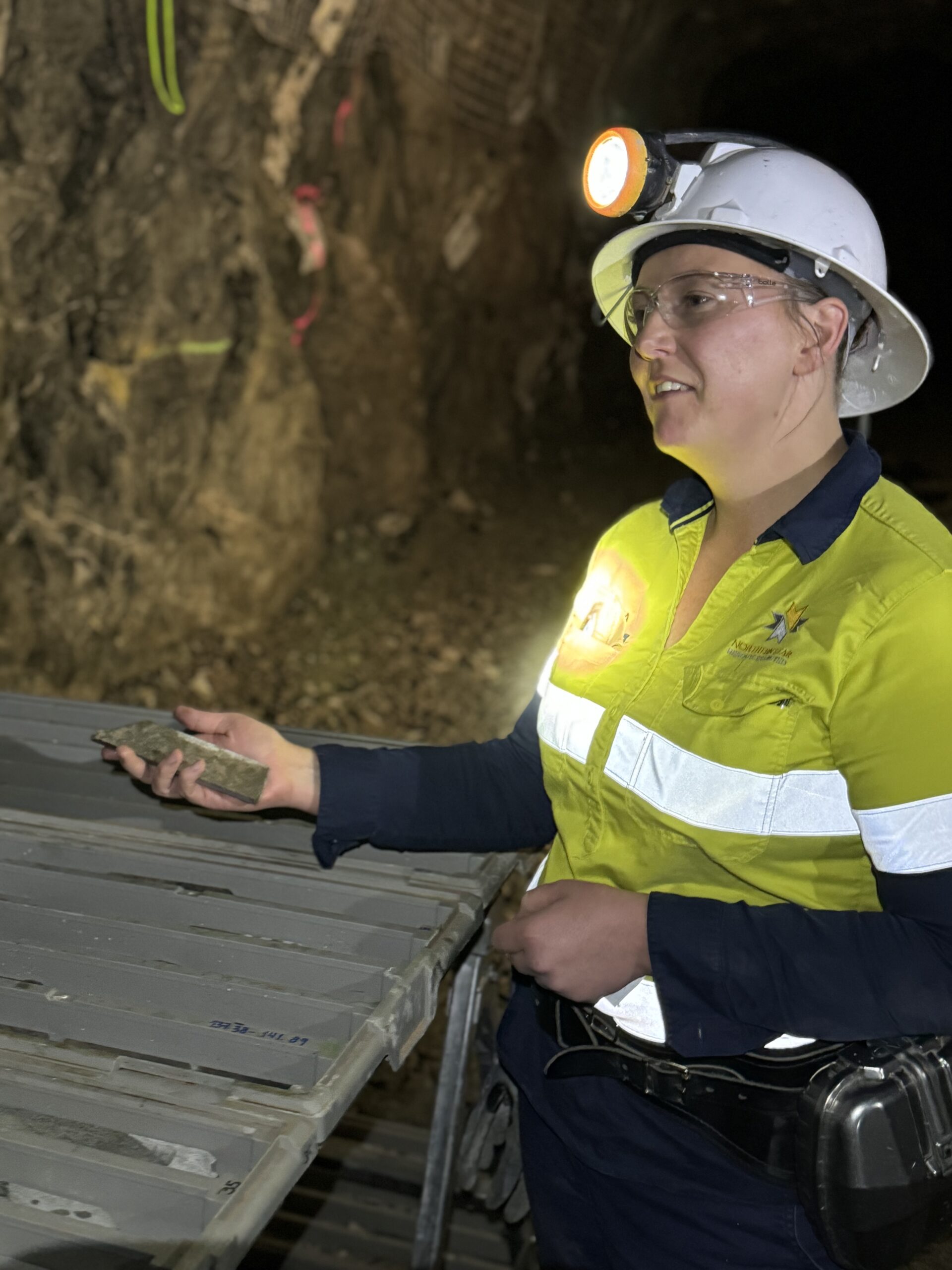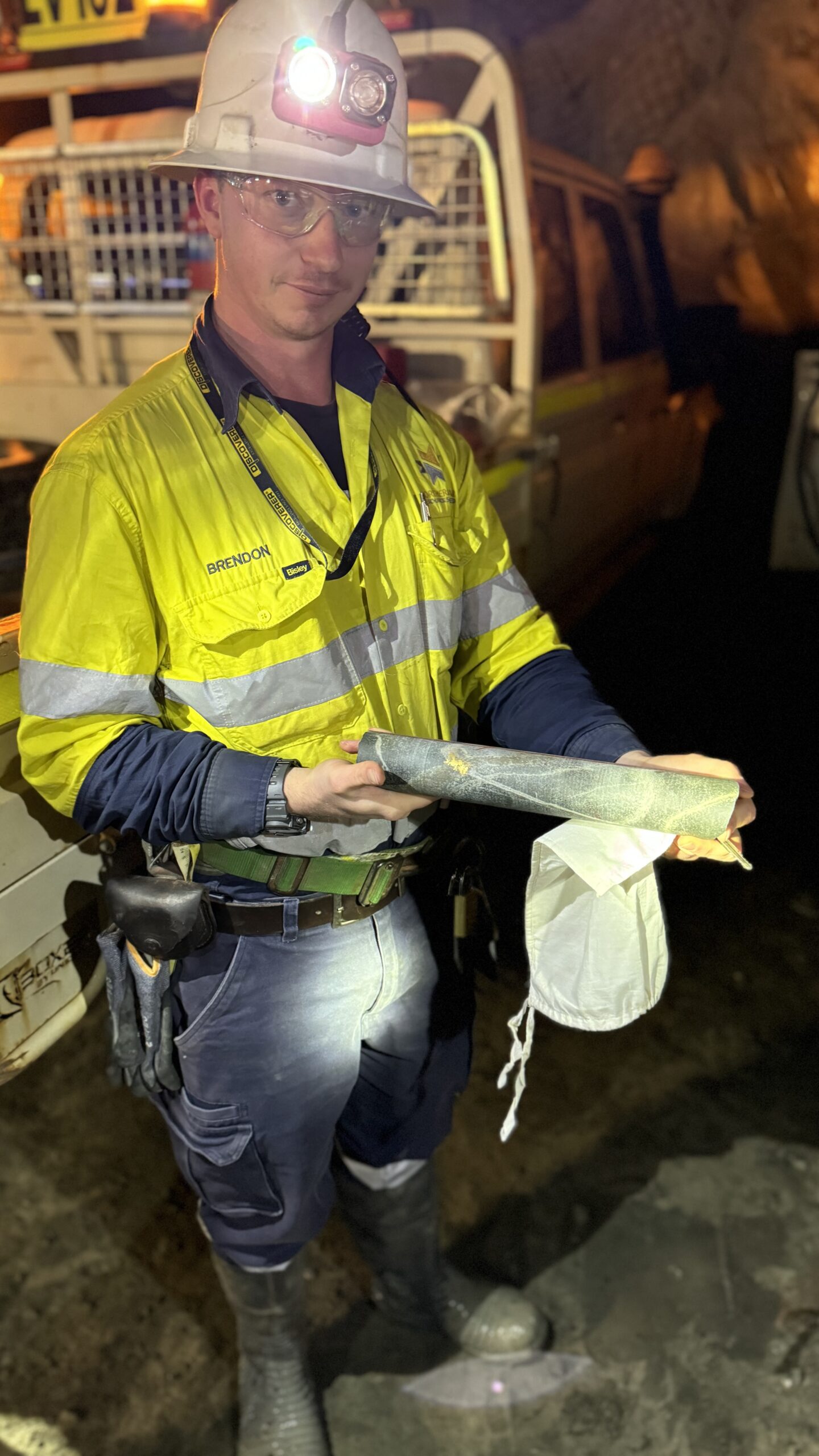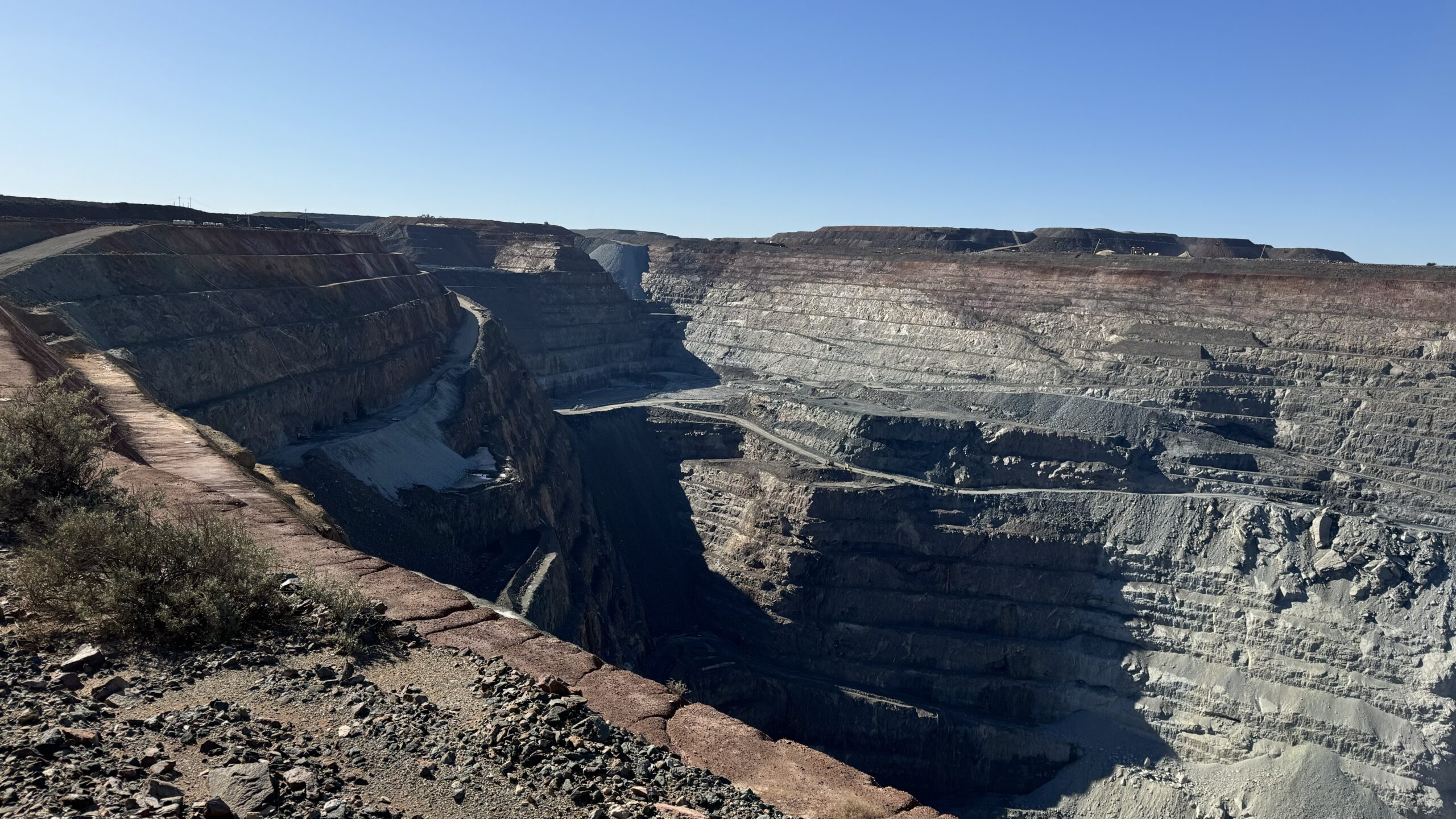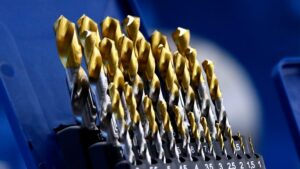I’m Super, thanks for asking: Northern Star leads Australia’s gold revival with Super Pit expansion

Stuart Tonkin says Kalgoorlie's Super Pit has plenty left to give. Pic: Josh Chiat
- Northern Star Resources sees decades ahead of its iconic Super Pit as the Golden Mile goes back to the future by heading underground
- MD Stuart Tonkin says the gold environment is ‘healthy’ as it spends $1.5bn to expand its Fimiston mill and double production to 900,000ozpa by 2029
- Gold miners expected to claim the spotlight at Diggers and Dealers Mining Forum in Kalgoorlie this week as prices strike record highs
The head of Australia’s largest domestic gold miner Northern Star Resources (ASX:NST) believes Kalgoorlie’s Golden Mile has decades of life ahead of it in a bullish gold environment.
Australia’s most famous gold mine is heading into its next phase of life, one year through a four-year $1.5bn expansion of its processing plant that promises to turn the once great orebody over four square miles on the edge of the Goldfields city back into one of the world’s five largest gold producers.
It comes as Northern Star begins production from the first three underground mines under the base of the Super Pit this financial year, adding to Australia’s longest running underground gold mine Mt Charlotte and the Fimiston Pit, where remediation work on a ~million tonne wall slip in 2018 will end this year.
That will open up high-grade ounces locked up since for safety reasons and comes ahead of a major cutback to access 6.5Moz of gold in the Fimiston South cutback.
Having produced 730,000oz in the 2017-18 financial year before the wall slip, falling to 437,000oz last year, Northern Star began the turnaround process in 2021 after becoming the first company to own the Golden Mile outright without a JV partner with its then $16 billion merger with Saracen.
It will deliver 550,000oz this financial year with the introduction of higher-grade ounces from Golden Pike and three undergrounds – Golden Pike Stockworks, Union Consols and Union Jack – before climbing to 650,000oz in 2026 and 900,000oz in 2029 once the new 27Mtpa mill is ramped up.

At a $3500/oz gold price, the mill expansion carries an IRR of 26% and payback of 3.3 years, but the forward curve suggests the market could be betting on yet higher prices, having already hit near record levels of US$2441/oz or $3750/oz yesterday.
“The final investment decision on that was at $2700/oz and the IRR was 19%. We’re showing you the $3500/oz to show you how much more enhanced those returns are based on that investment,” Northern Star MD Stuart Tonkin said on a pre Diggers and Dealers tour of the Super Pit with analysts, investors and media yesterday.
“If you want to hedge gold today, you can get forward gold hedges north of $4,000 an ounce.
“If you want to go three years, four years, at $4100, $4200, nearly $4300 Aussie dollars an ounce you can get a forward sale at the moment based on the interest contango.
“So that’s not about sentiment or view of where we think gold’s going, it’s just a reality of what you can do and place those at the moment and protect returns on investment decisions.”

Decades to run
Within years of Kalgoorlie’s discovery a network of underground tunnels snaking underground for over 3000km had formed to chase the Golden Mile’s high-grade lode and stockwork gold.
While grades have come down since, the massive economies of scale delivered by controversial Perth businessman Alan Bond’s gold business when he conceived the Super Pit in the 1980s turned the mine into an iconic open cut now tracking 4.4km long and 1.5km and then some wide.
Once the current pit shell is exhausted it will be some 820m deep. But Northern Star now view the pit – itself with 1.8Bt of mineable ore that will be extracted for 2o years or more – as a beachhead to revive the mile’s underground past.
Previously viewed as of little potential by old owners Newmont and Barrick, the world’s two largest gold producers and North America’s major gold names, the underground has taken focus under Northern Star and its MD Tonkin.
Since 2021, development rates have risen 224% to 14630, with another bump to 24,000m coming in FY25. That will enable the company – which fired the second and third of three portals into the 800,000oz reserve, 5.5Moz resource Fimiston underground in the past week – to work on multiple levels running development and production in tandem both at the new deposits and the 1400m deep, 62-year-old Mt Charlotte.
“We’ve got decades in front of us of pit activity, and in parallel to that, we’ll build large scale and multiple undergrounds along this Golden Mile,” Tonkin said.
“And my attitude is that the geology continues, so if you get the costs right – the mineral is there – if we get the maths and the costs right, there’s a lot of life to come out of it.
“And you obviously see the quality of the team. They’re doing great work, and that’s going to underpin the future.
“I’m talking decades, and it has a century of history. My attitude is there’s almost more gold in the ground than has come out already. So I’m really confident in the outlook for KCGM [Kalgoorlie Consolidated Gold Mines].”
That will be underpinned by the mill expansion, reportedly on track with $348m spent so far, which will bring all-in sustaining costs down through larger, newer equipment, reduced trucking time, partial automation and an improved plant layout to $1425/oz, from $1600/oz in FY24 (all in $3416/oz).

Time to buy?
Northern Star is sitting in a hot gold market with, comparatively, weak junior equity prices.
It’s begged the question whether the $16.35bn gold miner, which plans to increase output from 1.62Moz in FY24 to 2Moz in FY26 at its Kalgoorlie, Yandal and Pogo hubs, could be in the market to add to its portfolio through M&A.
At the same time, it could also be a time to sell assets to companies desperate to latch onto the metal’s run as one of the rare commodity winners of 2024, with two idled WA mills – Jubilee and Bronzewing – among its asset base.
“You’re right saying the gold price is where it is, potentially this is the time to sell gold mines, not buy them, would be the rhetoric,” Tonkin said.
“Our attitude is everything we have is for a purpose and a reason, and it’s delivering into our strategy. And so we’re not motivated to do either, buy or sell.
“We have a very solid, organic pathway with great returns, and that’s what we’re focused on.”
That organic pipeline largely centres around the KCGM expansion, which is backed by a strategic stockpile from decades of mining containing 137Mt of ore at 0.67g/t described by Tonkin as an insurance policy that equates to $6 billion in cash if current margins hold.
But he is equally bullish on the discoveries the company is making through a major investment in exploration around the Kalgoorlie region, especially a new find called Hercules 35km to the south of the Big Pit where drilling results have included 16m at 18.7g/t, 19m at 12.9g/t and 35m at 6.5g/t.
Hercules’ quality means it could be fast-tracked to displace lower grade ounces at Fimiston once developed.
“You can find ounces or buy ounces and you obviously want to do those things counter-cyclically if you can,” Tonkin said about the company’s strategy.
“All I’d say is we’ve got enough organically to do what we do and we’ve we’re delivering big production and production growth into a very, very healthy gold price environment.”
Meanwhile, with gold and the macro environment to dominate the Diggers and Dealers Forum starting in Kalgoorlie today, Tonkin believes there could still be volatility around the Trump v Harris showdown in the US election.
“I think there’s a bit of volatility leading up to the US election but gold is still very healthy and we do our reserves at $2000/oz, $2500/oz resource, there is $1000 an ounce above in headroom to any cost pressure or decision changes,” he said.

A question of cost
Cost inflation, commodity wobbles and the impact it’s had on miners will be a talking point at Diggers this week.
Tonkin says outside of pressure on labour many costs appear to be stabilising.
It comes with the miner still needing to spend upwards of $500 million in each of FY25 and 26 on the KCGM mill expansion along with exploration and capex across its multitude of other sites.
“It doesn’t retrace quickly, so there’s already repricing on some longer contracts with increases, and those indexes take a long time for lag to unwind, but I’d just say it doesn’t have the same escalation as previous years,” Tonkin said.
The mill expansion had previously looked likely to run in tandem with BHP’s $1bn+ renovation of the Kalgoorlie Nickel Smelter, threatening an almighty strain on the mining capital’s workforce and accommodation.
But its Nickel West division will head into care and maintenance instead until at least February 2027 due to low prices for the previously flying battery metal.
Weakness in battery metals and specifically Nickel West could open skilled construction and mining labour up for gold miners like Northern Star, with Tonkin saying Nickel West ‘has been proactive in engaging other businesses in the Goldfields’.
While sentiment in gold is improving running into Diggers, lithium and nickel miners and explorers are at an ebb due to oversupply, low prices and negativity around the shift from petrol cars to EVs.
Nickel West employs 3300 people including contractors, though BHP has said ~1600 frontline staff will be guaranteed roles in its Pilbara iron ore and South Australian copper businesses if they want them.
Related Topics

UNLOCK INSIGHTS
Discover the untold stories of emerging ASX stocks.
Daily news and expert analysis, it's free to subscribe.
By proceeding, you confirm you understand that we handle personal information in accordance with our Privacy Policy.








